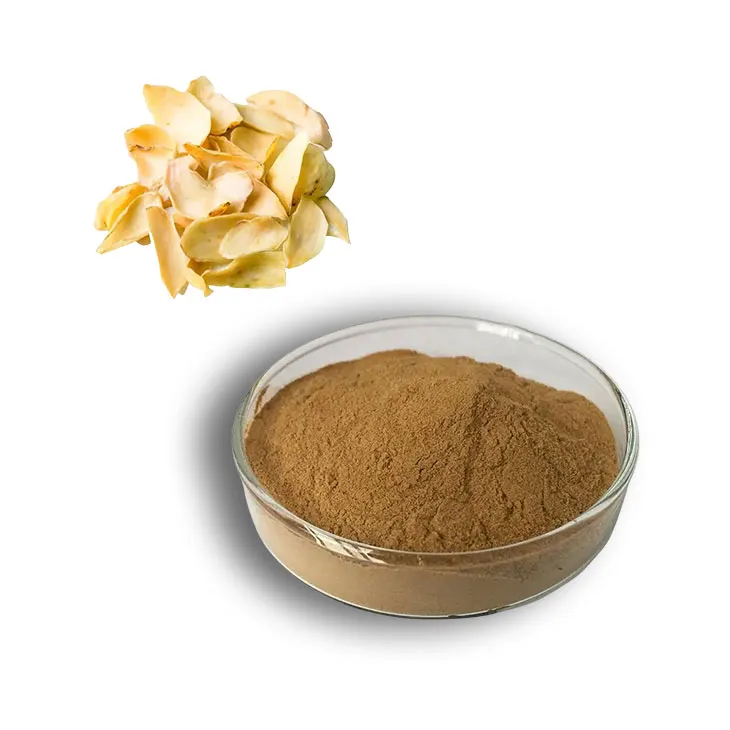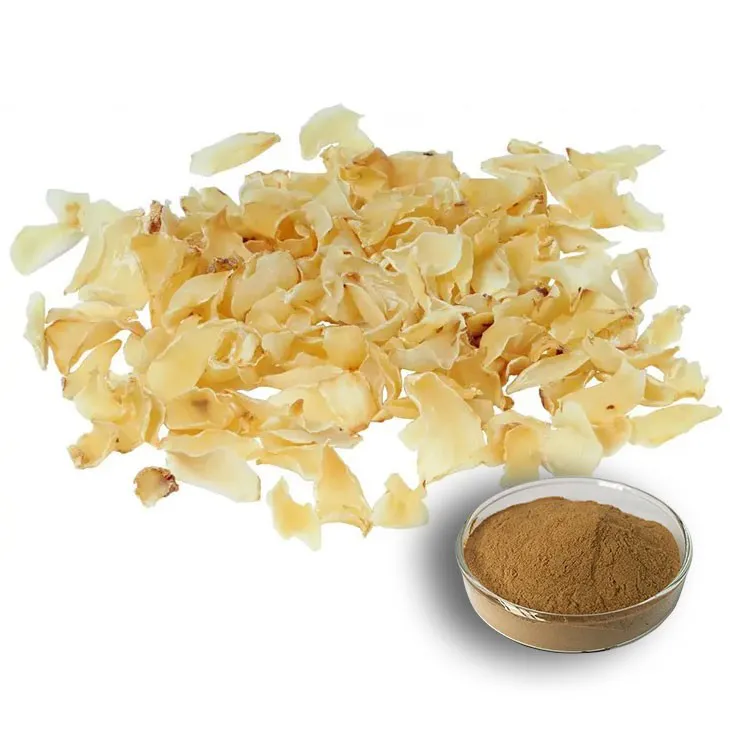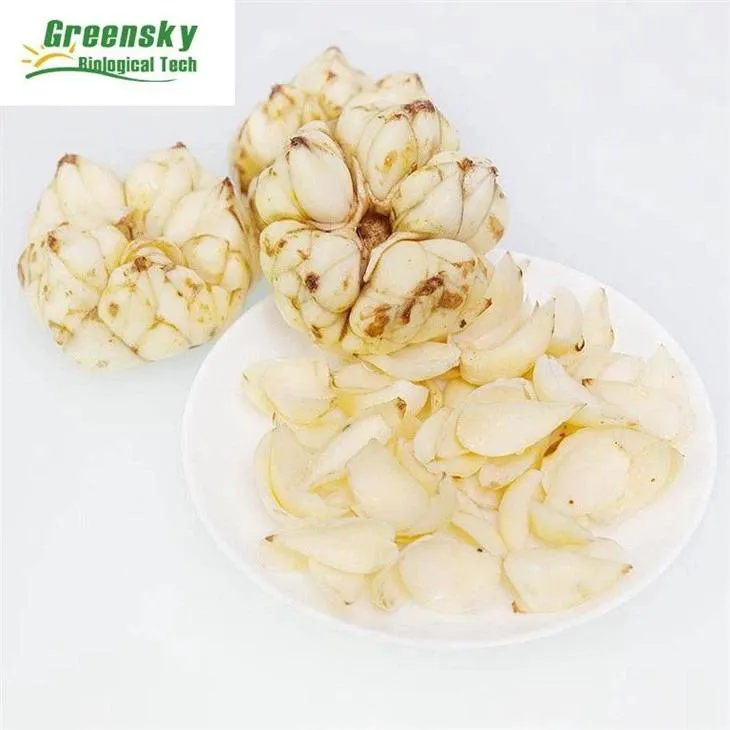- 0086-571-85302990
- sales@greenskybio.com
Components of lily extract in fertilizers and feeds.
2024-11-30

Introduction
Lily extract has emerged as a notable ingredient in both the fertilizer and feed industries. The increasing interest in Lily extract can be attributed to its potential to offer a range of benefits in these applications.

Components in Fertilizers
Growth - Promoting Hormones
One of the significant components of Lily extract in fertilizers is growth - promoting hormones. These hormones play a crucial role in plant growth and development. For instance, they can stimulate cell division and elongation, which are fundamental processes for the overall growth of plants.
Trace Amounts of Potassium
Lily extract may also contain potassium in trace amounts. Potassium is an essential nutrient for plants. It is involved in several physiological processes such as photosynthesis, where it helps in the opening and closing of stomata, enabling the efficient exchange of gases. Additionally, potassium contributes to the regulation of water uptake in plants, which is vital for maintaining turgor pressure and overall plant health.
Trace Amounts of Phosphorus
Another important component is phosphorus in trace amounts. Phosphorus is necessary for various plant functions. It is a key part of the nucleic acids (DNA and RNA), which are responsible for genetic information transfer and protein synthesis. Phosphorus also plays a role in energy transfer within the plant cells, as it is a component of ATP (adenosine triphosphate), the primary energy currency in living organisms.
Benefits of these Components in Fertilizers
The combination of these components in lily extract offers several advantages for plant growth.
- Enhanced plant growth: The growth - promoting hormones, along with the essential nutrients like potassium and phosphorus, work together to stimulate overall plant growth. This can result in taller plants, increased leaf area, and more robust stems.
- Improved root development: Potassium and phosphorus are particularly important for root growth. They help in the formation of strong and healthy roots, which in turn improve the plant's ability to absorb water and nutrients from the soil.
- Increased resistance to diseases: A well - nourished plant with a proper balance of these components is more likely to have a stronger immune system. This can help the plant to better resist various diseases and pests, reducing the need for chemical pesticides.

Components in Feeds
Amino Acids
In feed, lily extract is rich in amino acids. Amino acids are the building blocks of proteins, which are essential for the growth and development of animals. Different amino acids have different functions. For example, some amino acids are involved in the synthesis of enzymes, which are crucial for various metabolic processes in the animal's body. Others are necessary for the formation of structural proteins such as muscle tissue.
Antioxidants
The extract also contains antioxidants. Antioxidants play a vital role in maintaining the health of animals. In the animal's body, normal metabolic processes generate free radicals, which are highly reactive molecules. If not controlled, these free radicals can cause oxidative stress, which can damage cells and tissues. Antioxidants in lily extract can neutralize these free radicals, thereby reducing oxidative stress and protecting the animal's health.
Benefits of these Components in Feeds
The presence of amino acids and antioxidants in lily extract has several positive impacts on animals.
- Growth and development: The amino acids in the lily extract contribute to the proper growth and development of animals. They are necessary for the formation of new tissues, such as muscle growth in livestock or feather development in poultry.
- Health maintenance: The antioxidants help in maintaining the overall health of animals. By reducing oxidative stress, they can prevent various diseases associated with oxidative damage, such as certain liver and heart diseases. This can lead to improved animal welfare and better productivity in the livestock and poultry industries.

Conclusion
In conclusion, lily extract is a highly promising ingredient in both fertilizers and feeds. In fertilizers, its components such as growth - promoting hormones, potassium, and phosphorus can enhance plant growth, improve root development, and increase disease resistance. In feeds, the amino acids and antioxidants present in the extract contribute to the growth and development of animals and help in maintaining their health. As research continues, it is likely that more applications and benefits of lily extract will be discovered in these industries.

FAQ:
What are the main growth - promoting hormones in lily extract used in fertilizers?
The specific growth - promoting hormones in lily extract for fertilizers may vary. However, some common ones could be auxins or cytokinins in small amounts. These hormones play crucial roles in promoting cell division, elongation, and differentiation in plants, which ultimately contribute to enhanced plant growth.
How do the trace amounts of potassium and phosphorus in lily extract affect plant growth in fertilizers?
Potassium is essential for various physiological processes in plants, such as water regulation, enzyme activation, and improving the quality of fruits and flowers. The trace amount of potassium in lily extract can supplement the plant's potassium needs. Phosphorus is involved in energy transfer and storage, as well as in DNA and RNA synthesis. The presence of phosphorus in lily extract helps in promoting root development, flowering, and fruiting.
Which amino acids are typically present in lily extract for feeds?
Lily extract for feeds may contain amino acids such as lysine, methionine, and tryptophan. Lysine is important for protein synthesis and the growth of animals. Methionine is involved in methylation reactions and is also crucial for protein synthesis. Tryptophan can be a precursor for important bioactive molecules like serotonin, which can affect the behavior and well - being of animals.
How do antioxidants in lily extract maintain animal health in feeds?
Antioxidants in lily extract work by neutralizing free radicals in the animal's body. Free radicals are produced during normal metabolic processes, and excessive amounts can cause oxidative stress, which is linked to various diseases. By scavenging these free radicals, the antioxidants in lily extract help protect cells from damage, maintain the integrity of cell membranes, and support the overall immune function of animals.
Can lily extract in fertilizers replace traditional chemical fertilizers?
While lily extract in fertilizers has beneficial components for plant growth, it is not likely to completely replace traditional chemical fertilizers at present. Traditional chemical fertilizers can provide large amounts of essential nutrients quickly. However, lily extract can be used as a supplement to improve plant growth, root development, and disease resistance in combination with traditional fertilizers.
Related literature
- Analysis of Bioactive Components in Lily Extract for Agricultural Applications"
- "The Role of Lily - Derived Compounds in Animal Feed Nutrition"
- "Beneficial Effects of Lily Extract in Fertilization: A Comprehensive Review"
- ▶ Hesperidin
- ▶ Citrus Bioflavonoids
- ▶ Plant Extract
- ▶ lycopene
- ▶ Diosmin
- ▶ Grape seed extract
- ▶ Sea buckthorn Juice Powder
- ▶ Fruit Juice Powder
- ▶ Hops Extract
- ▶ Artichoke Extract
- ▶ Mushroom extract
- ▶ Astaxanthin
- ▶ Green Tea Extract
- ▶ Curcumin
- ▶ Horse Chestnut Extract
- ▶ Other Product
- ▶ Boswellia Serrata Extract
- ▶ Resveratrol
- ▶ Marigold Extract
- ▶ Grape Leaf Extract
- ▶ New Product
- ▶ Aminolevulinic acid
- ▶ Cranberry Extract
- ▶ Red Yeast Rice
- ▶ Red Wine Extract
-
Wheat Germ Extract
2024-11-30
-
Thunder God Vine Extract
2024-11-30
-
Phellodendron Extract
2024-11-30
-
Yellow Pine Extract
2024-11-30
-
Genistein
2024-11-30
-
Angelica sinensis extract
2024-11-30
-
Chia Seed Powder
2024-11-30
-
Nutmeg Extract
2024-11-30
-
Citrus Aurantii Extract
2024-11-30
-
Chaste Berry Extract
2024-11-30





















